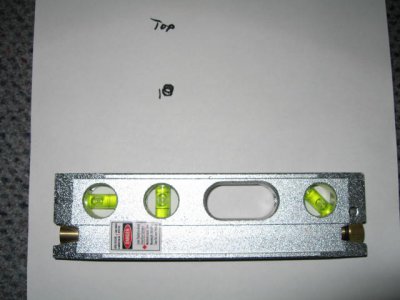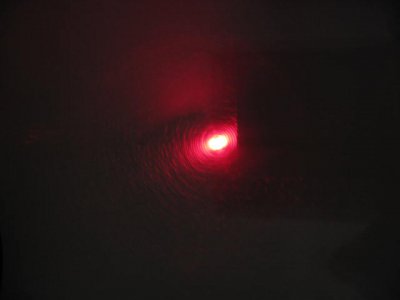Would this make sense? (haven't tried it yet)
Use a laser level (something like this: http://www.harborfreight.com/2-in-1-magnetic-torpedo-laser-level-67800.html )across the bed near the headstock and mark the spot it makes on a far wall. Do the same at the tailstock and compare the height of the spots. I could be making a logical error somewhere but It seems to me it would measure the twist (or lack of twist) in the bed very accurately.
The logic is clear but there are a few practical challenges. The problem with entry level laser levels is the beam width. It would not provide what I call a pinpoint on the wall but more like a blotch. Plus, the one I tried in the past under different circumstances had poor repeatability. Moving the level from one place to another and back did not always give the same reading. For the present application, even if a very expensive laser was used, it would be tricky to measure the height of the spots on the wall in a way that would only reflect twist in the bed and not also reflect other sources of error.



